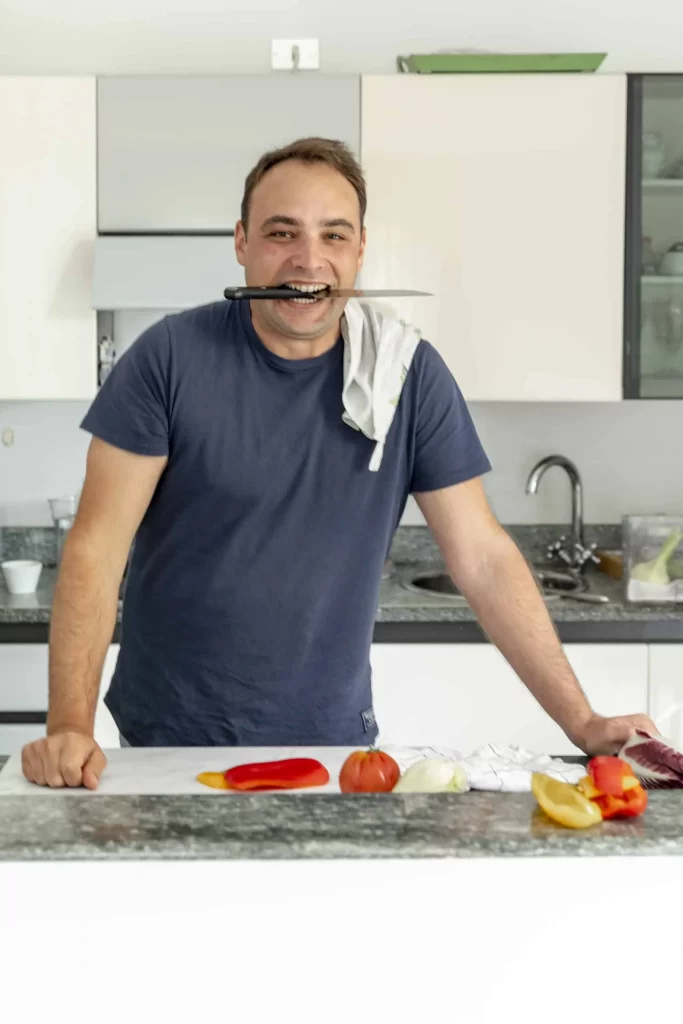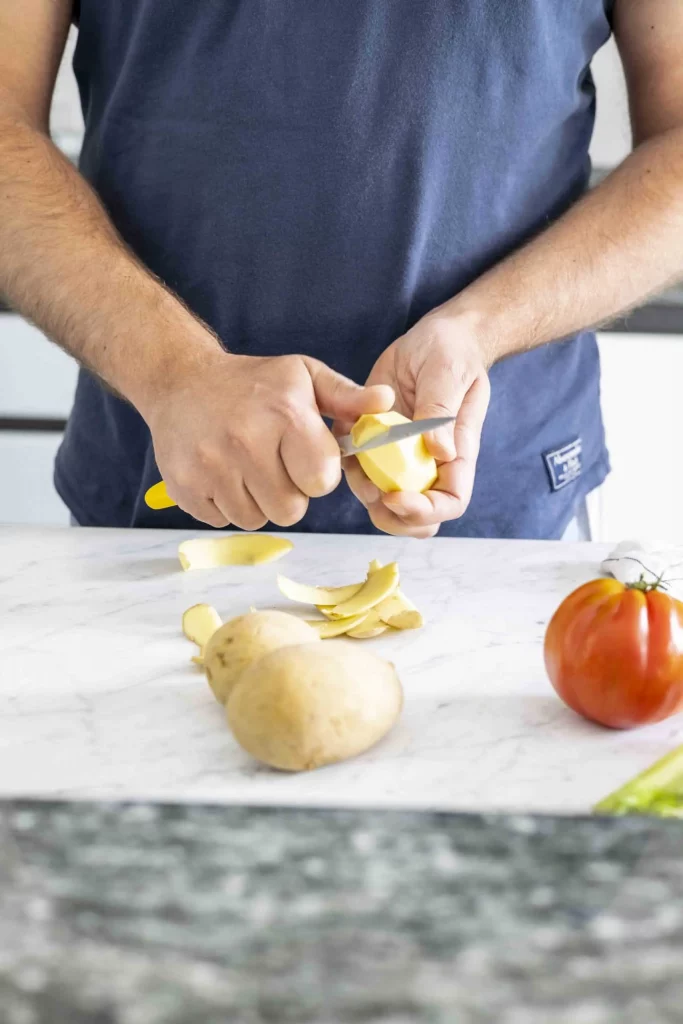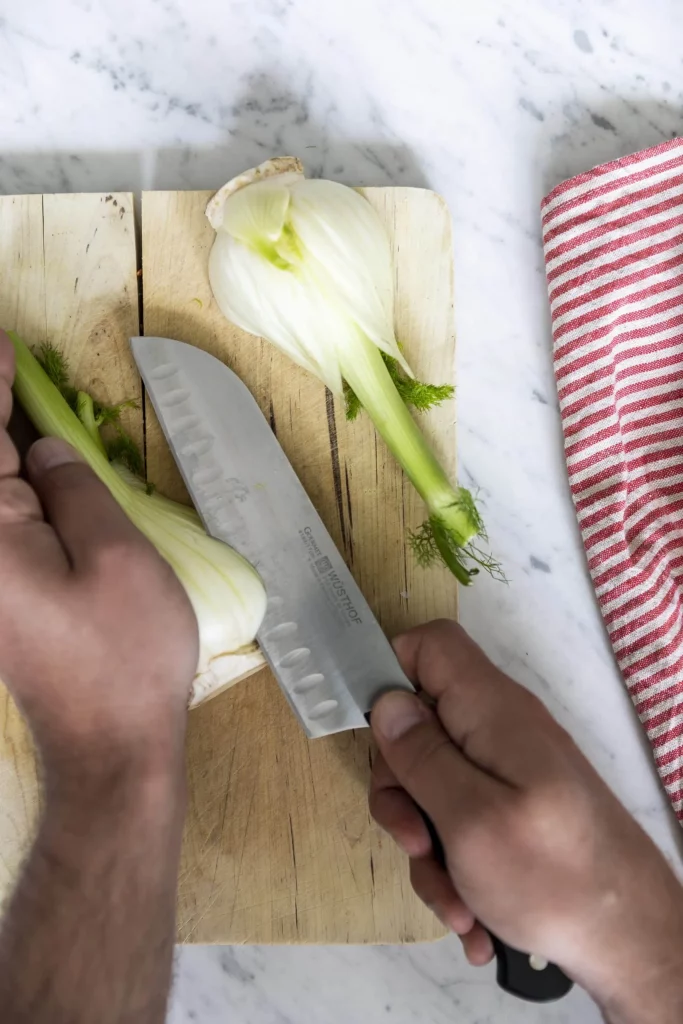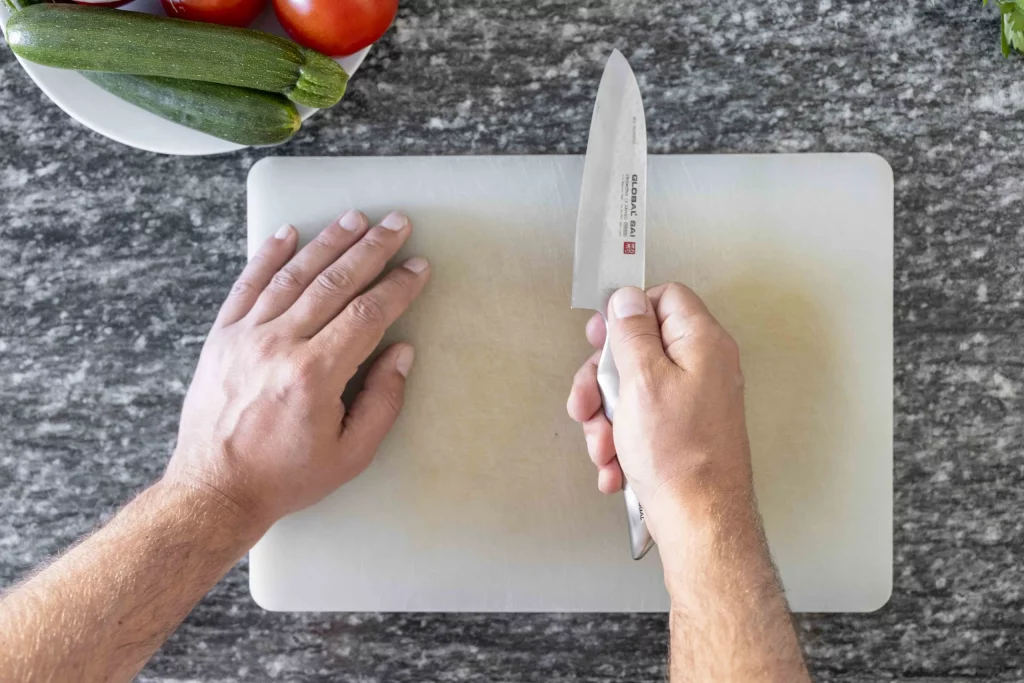Which knives do you need most in a kitchen? When buying a knife, there are a few simple rules to getting what you need, saving money, and not risk getting hurt.
I must admit that knives have not been part of my culinary passions up to this point; perhaps because I’m a bit distracted and repeatedly cut my fingers slicing something. There are many knives in my kitchen drawer, some of which I don’t even know what they’re for. However, I completely changed my mind when I talked to Alexander, my food critic partner, because I realized that the world of knives is immense. So I wanted to know more.
Those who are passionate about cooking might want to buy beautiful, expensive knives, objects of pure, elegant design, and knife blocks to store them in the kitchen. But do you know what the most important thing is? It’s learning how to use them safely and not get hurt.
Alexander, a brilliant food writer, worked in the kitchen of a Michelin-starred restaurant near Turin as a Chef de Partie, or station chef, so he can talk for hours and hours about his knives. Quickly, I realized that knives are a topic that not only interest men in general but also all chefs. It’s something important to show off, something to be proud of, and something absolutely crucial to learn how to use well and to use safely.
For chefs— please remember that you are the chef of your kitchen— knives are the most used and necessary tools to prepare food well. The process of cutting is fascinating even in the eyes of those who only watch the work in progress.
As Alexander put it, “A knife must be sharp, and it must cut very well; otherwise, you risk straining your wrists and getting hurt. A knife is not everything; you also need some experience and to do things calmly.”

There are endless categories of knives, but the main distinction is between western-style knives and Japanese-style knives. The difference lies in the material and the edge of the blade. Both are made of steel, but the difference is in their hardness: the harder the steel is, the better it keeps a very sharp edge which can chip or break. Although there are some exceptions, Japanese knives are lighter and stronger but tend to be more fragile.
How many knives do you need in a kitchen? Only 3
You don’t need many of them. To do almost everything in the kitchen, you need three kinds: a paring knife, a chef’s knife, or a Santoku (a Japanese-style knife), and a bread knife. That’s all.
- A paring knife: it has a straight blade of about 3.9 inches (or less). It’s used to peel and prepare vegetables and cut them into thin slices, even off of a cutting board. It’s used for small tasks: eliminate imperfections and stalks of fruit, make small decorations, cut vegetables, and slice garlic. A curved, shorter version serves to cut towards the hand: you keep it wrapped between your fingers and thumb and push the vegetable towards the blade. It can be more dangerous and less versatile than a straight paring knife.

- A chef’s knife: the blade is usually 7.8-9.8 inches long. Alexander has a Wusthof Dreizack Classic, which is one of the best of its kind. Trying it, I concluded that it’s a heavy knife, definitely better for men’s hands. You hold the tip close to the cutting board and rock the back of the blade forward to complete the cut. It’s an easy-to-use knife that serves many purposes: complex or versatile cutting, cutting, slicing, and disjointing meat, slicing cheese, or chopping or dicing fruit, vegetables, and nuts. It does not create fine slices like the Santoku.

The Santoku is similar to the chef’s classic, but the blade has a slightly different shape. The absence of a tip on the Santoku knife means one can slice with a single downward cut. It’s not just a vegetable knife, it’s a handyman knife, and it’s an excellent alternative to a chef’s knife. While many chefs successfully use the rocking method, the Santoku is faster and more efficient. The Santoku is best used for cutting meat, slicing cheese, slicing and dicing fruit, vegetables, and nuts, mincing meat or herbs, and creating fine slices.
- A bread knife: it has a different degree of importance. Besides cutting bread, it is essential for cutting pineapple, for instance. It’s a serrated knife with a blade about 7.8-8.6 inches long. Be careful because it’s used to saw vigorously, so do not distract yourself; look carefully at the position of your hands.

Other kitchen essentials
In a kitchen, there are other essential tools:
- Tongs that serve food and turn your grilled or roasted meat and vegetables;
- A potato peeler: you could use a paring knife but if you want to be faster and waste less food, try a potato peeler for potatoes, carrots, cucumbers, and other vegetables or fruit;
- A Microplane: It’s a little grater that has different functions. “Try using it to grate garlic, carrots, and celery for a sauté,” Alexander told me. In fact, with less movement, the result is precise and produces a uniform size. A smaller Microplane is good for grating ginger, whole nutmeg, and parmesan cheese.
Choose the right cutting board
It is as important as choosing a good knife. A marble chopping board is my favorite, but it is not suitable for the wellbeing of knife blades. It can chip the edges of the knife. It’s better to choose a polyethylene board or a treated wooden board, which should be carefully cleaned.

How do you wash them?
Whatever you do, don’t put them in the dishwasher. A knife is made of good quality steel and easily washes under cold water. Do not let it sit in water. Dry it carefully immediately after using, but pay attention to the blade.
What to buy?
Although the average life of a good knife is at least 20 years, some, especially Japanese knives, require maintenance over time and special care. Choose a good quality knife and learn how to maintain it properly. A reasonable knife costs between 60 and 100 dollars. A product that is too cheap will lose its sharpness in a short time.
Last warning: Be careful
Although some videos on the internet show that handling knives is child’s play, using them without getting hurt is not easy. It would help if you paid a lot of attention and had previous experience to avoid cutting yourself. Always keep your eyes on what you’re cutting; do not be distracted. Always pay attention to where your fingers are in relationship to what you are cutting and never feel too safe.

As a meat cutter of 30+ yrs, I cannot express the importance of paying attention while using your knives. One split second, & you can cut your fingers to the bone. SPEED isn’t as important as QUALITY cutting. Speed comes w/repitition.
I couldn’t agree more! Thank you so much for your message 😊